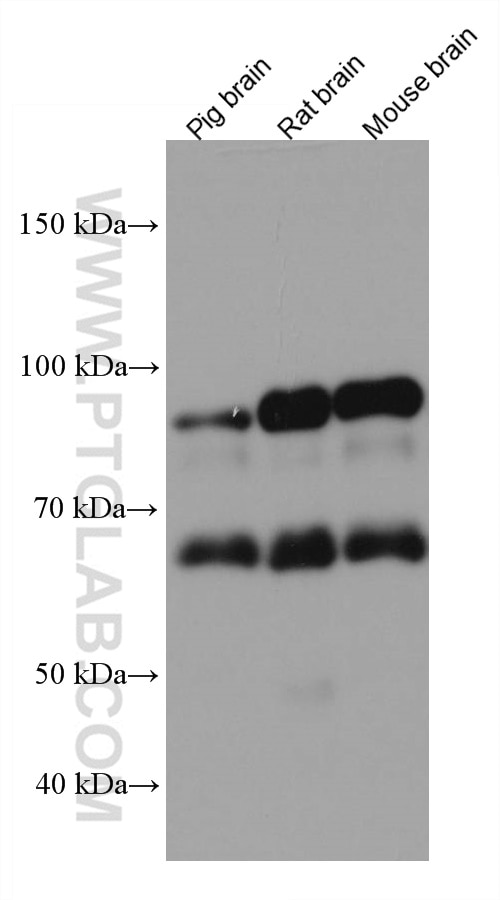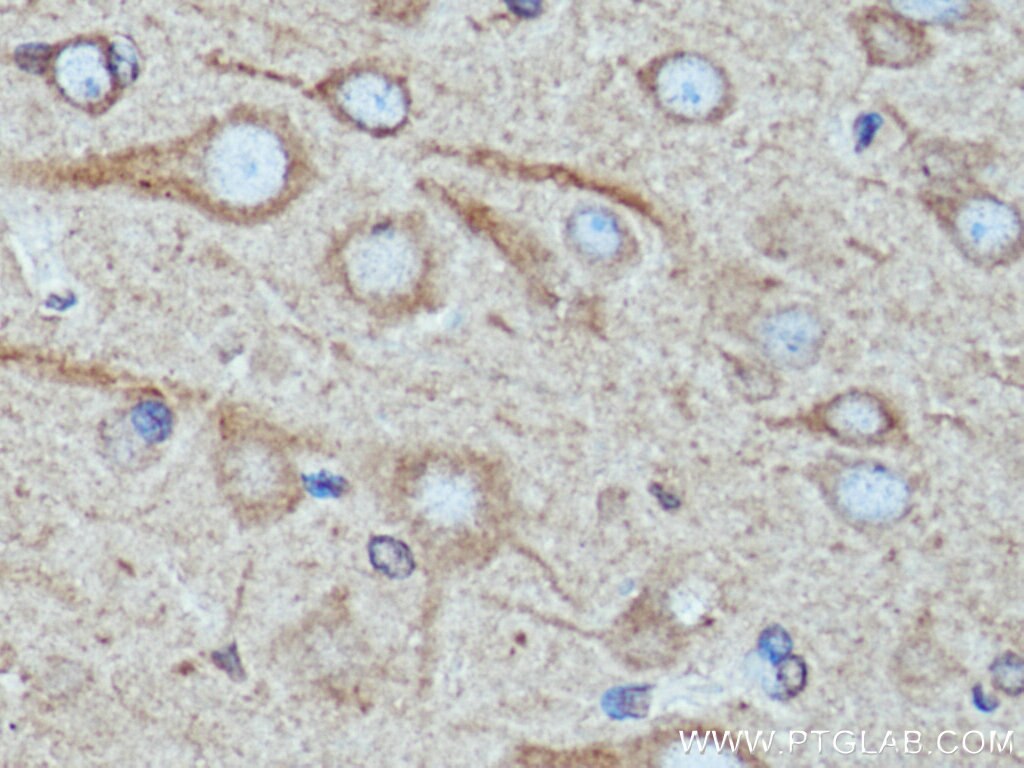Validation Data Gallery
Tested Applications
Recommended dilution
| Application | Dilution |
|---|---|
| It is recommended that this reagent should be titrated in each testing system to obtain optimal results. | |
Product Information
67268-1-PBS targets TRIM9 in WB, IHC, Indirect ELISA applications and shows reactivity with Human, Mouse, Rat, Pig samples.
| Tested Reactivity | Human, Mouse, Rat, Pig |
| Host / Isotype | Mouse / IgG1 |
| Class | Monoclonal |
| Type | Antibody |
| Immunogen | TRIM9 fusion protein Ag27856 相同性解析による交差性が予測される生物種 |
| Full Name | tripartite motif-containing 9 |
| Calculated molecular weight | 80 kDa |
| Observed molecular weight | 90 kDa, 79 kDa, 61 kDa |
| GenBank accession number | BC013414 |
| Gene Symbol | TRIM9 |
| Gene ID (NCBI) | 114088 |
| RRID | AB_2882538 |
| Conjugate | Unconjugated |
| Form | Liquid |
| Purification Method | Protein G purification |
| UNIPROT ID | Q9C026 |
| Storage Buffer | PBS only , pH 7.3 |
| Storage Conditions | Store at -80°C. |
Background Information
TRIM9(E3 ubiquitin-protein ligase TRIM9) is also named as RNF91 and belongs to the TRIM/RBCC family. TRIM9 protein is a brain-specific E3 ubiquitin ligase. Importantly, TRIM9 is present in LBs found in DLB and PD, suggesting that TRIM9 not only plays roles in the regulation of neuronal functions, but also participates in the formation or breakdown of abnormal inclusions through its ligase activity and besides the striatum and hippocampus, the highest expression of TRIM9 protein is seen in the frontal, temporal and occipital cortices through the western blot (PMID:20085810). It has been reported that TRIM9 is highly expressed in the cerebral cortex in mouse and human brains and that TRIM9 is decreased in damaged brains in patients who have Parkinson disease and dementia with Lewy bodies(PMID:22337885). It has 3 isoforms with molecular mass of 79, 90 and 61 kDa.




